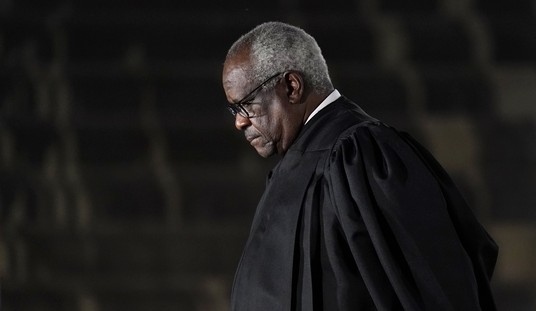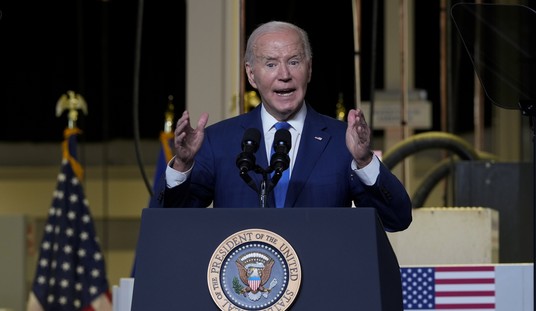It's a shame Sen. Carl Levin failed to take the time to call public attention to Gen. David Petraeus' "Anaconda Strategy" chart. Petraeus briefly referred to the chart during his initial testimony this week before Levin's Senate Armed Services Committee.
The Anaconda Chart is a complex graphic that depicts an intricate, multi-dimensional war. It's tough to describe even with a copy in front of you. However, the strategic concept behind Petraeus' chart (titled "Anaconda Strategy versus al-Qaida in Iraq") is dirt simple: Squeeze and keep squeezing.
A commercial artist would certainly describe the chart as "too busy," but war isn't an exercise in aesthetics. The Anaconda Strategy identifies six routes of attack on al-Qaida in Iraq: 1) Kinetics (which includes combat); 2) Politics (which includes countering ethno-sectarian pressures and Iraqi political reconciliation); 3) Intelligence (operations from air recon to intel assessment); 4) Detainee Ops (which includes counter-insurgency in detention facilities); 5) Non-Kinetics (education, jobs programs); and 6) Interagency.
Anaconda's Interagency is a hodge-podge and a kludge of a category, including diplomacy, information operations and -- an interesting specificity -- engagement with Syria.
On the chart, these six broad routes become operations that converge upon and compress al-Qaida's command and control capabilities, finances, ideological appeal, safe havens, weapons and popular support.
The U.S. military uses the acronym DIME as verbal coin for "the elements of power": Diplomatic, Information, Military and Economic. Petraeus' Anaconda Chart is DIME in big dollars.
Since Petraeus' and Ambassador Ryan Crocker's September 2007 testimony, "the Anaconda" (the incremental synergy of this complex war-fighting and nation-building process) has dramatically squeezed al-Qaida. No, it hasn't crushed it -- but the organization is physically damaged. Moreover, with the "Sunni Awakening" and similar programs, al-Qaida has suffered extraordinary political and information defeats as Sunnis publicly turned on the jihadis.
Recommended
Is this victory in Iraq? No. But it suggests we've won a major battle with potentially global significance, the kind that in the long term squeezes al-Qaida's ideological appeal in all corners of the planet.
Shia gangs and Muqtada al-Sadr's Mahdi Militia also receive the same multidimensional squeeze. Remember, last week the herd-media quickly declared the Iraqi Army's recent counter-militia operations in Basra, east Baghdad and southern Iraq a huge failure, "the Basra Blunder" according to one headline. Both Petreus and Crocker were pestered with questions about the Iraqi Army's operational mistakes and inadequacies.
Iraqi Sunni Arab and Kurd political reactions to the attacks on the Shia militias has proven to be overwhelmingly positive, however. Iraq has progressed to the point where the political context is the dominant context and a democratic Shia-led government taking down Shia gangs was a step toward national reconciliation among ethno-sectarian groups.
Is this a surprise? Let's go to the chart: Petraeus' Anaconda chart demonstrates that the "political route of attack" can be as lethal as a kinetic (combat) operation -- perhaps more so if the goal is bringing the marginalized and antagonized into a democratic political process. In fact, in Iraq the political context is now the dominant context.
In the case of Basra and east Baghdad, at some point the Iraqi Army had to confront the Shia gangs. No, the fight wasn't perfect, but war is not the realm of perfect. War is the realm of "friction," as Clausewitz wrote, "the suck" in current lingo. The Iraqi Army and Iraqi government planned and executed the operation themselves. Failure? Don't think so. This is progress. As time passes, it is increasingly clear the Iraqi Army did a far better job than the Shia gangsters.
But we all know why the complex chart gets ignored and successes are glasses half empty: A presidential election campaign is on, and the Democratic Party has bet its soul on defeat.
"Hear no progress in Iraq, see no progress in Iraq, but most of all speak of no progress in Iraq." Thus Sen. Joe Lieberman, a member of the Armed Service Committee, deftly summed the last two years of Democratic Party posturing as well as the Democrats' talking points in the latest hearings.
Lieberman's maverick pal, Senator and Republican presidential nominee John McCain, spoke more bluntly, "Congress should not choose to lose in Iraq, but we should choose to succeed."

























Join the conversation as a VIP Member